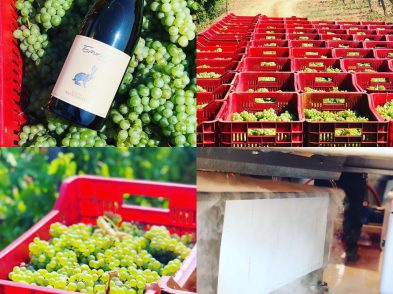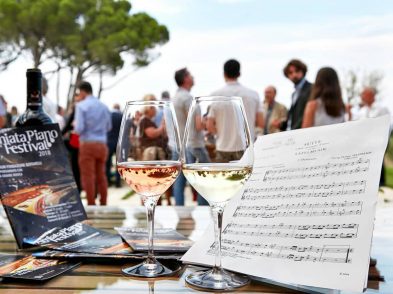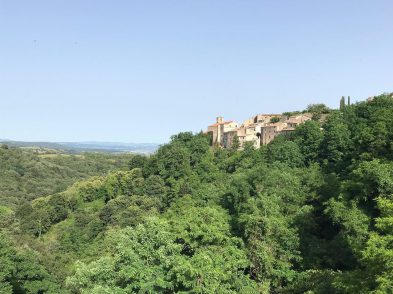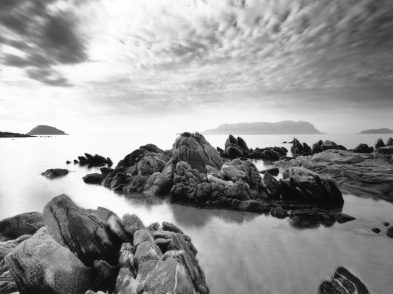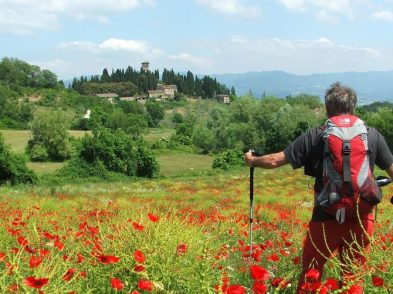There’s a quiet magnificence to the Parco Tecnologico
Archeologico delle Colline Metalliferie Grossetane and it has nothing to do
with its mouthful of a name. The park has no boundaries, no borders, no gates.
It runs completely unchecked across the Metalliferous Hills, in the northern
area of southern Tuscany. And it is a veritable miniature of the Tuscan
Maremma, the territory it calls home.
Like the park and
the surrounding territory, the Tuscan Maremma is impossible to map. People who
have lived there all their lives can’t tell you where it begins or ends, let
alone an enamoured expat like me, who has clocked no more than half a decade
here and has seen less than a third of the territory in any kind of intimacy.
But there’s a reason why this expatriate chose the
phrase ‘quiet magnificence’ instead of the adjective ‘beautiful’ to describe
this park. As beautiful as the acres of immensely ancient cedars and oaks are,
they are probably not enough to get you off the couch of your Florentine home
and onto the Siena-Firenze motorway for the hour-and-a-half trip into the Maremma.
The Parco Tecnologico Archeologico delle Colline
Metalliferie Grossetane (in Italian: www.parcocollinemetallifere.it)-or
if you prefer the far less breathy English translation, Tuscan Mining
Geopark-recently received UNESCO recognition. If that’s not motivation
enough for a day trip, consider that the park is the only one of its kind in
Italy, and was not awarded the UNESCO seal for its natural beauty alone.
‘Geopark’ is a UNESCO-invented word used to valorise destinations with an
earth-science significance. In this park’s case, that significance is the
residual magnificence of more than 3,000 years of mining that is honeycombed
throughout its hills. The locals who call the Metalliferous Hills their home
have shaped so much of their collective identity and traditions around mining
that it continues to define them even today, when the picks and drills are
silent.
This is only the second summer since the park earned
its UNESCO designation, and it’s safe to say that everyone is still in
celebration mode. Seven municipalities have one foot or more in the territory
that makes up the geopark. Each has its own porta, or door, into the
parkland. Like most Italians, the locals have a flair for poetics, so if you
were imagining literal doors, think instead of prominent tourist attractions in
a park so large it might as well as be endless.
In August, all but one of the seven porte will
be pit stops for The Grey Cat Jazz Festival (in Italian:
http://alturl.com/myuut). Celebrating its 32 year, this musical event is an
institution in the Tuscan Maremma, disproving the universal cliché that country
folk don’t listen to jazz. In preparation for the festival, the towns will be
sparkling clean and at their most charming, so it’s the perfect time to visit.
For Gavorrano, the August 8 performance of
Italian jazz band, I Gatti Mezzi, will be but one of the many twilight concerts
on the summer playbill at the cavernously spectacular Teatro delle Rocce, an
outdoor amphitheatre that hosts everything from ballets and operas to concerts
and children’s matinees.
Next door, the Parco Minerario Naturalistico di
Gavorrano Museum (in Italian: www.parcominerario.it)
is open every day except Monday, with guided tours through the converted pyrite
mine. On display are the tools and memorabilia left behind by the Gavorranesi
miners of the last century. Outside, a small and rustic chapel, dedicated to
San Rocco, patron saint of miners, is painted in bright colours to, as legend
has it, ward off the darkness of the mines.
From Gavorrano, the next major porta of the
Tuscan Mining Geopark is in Massa Marittima. On the road, you’ll pass
two other smaller porte. The inconspicuous town of Ribolla in Roccastrada
has a small museum dedicated to the 1952 grisù (firedamp) explosion that
killed 43 miners, while in nearby Montieri, the tourist information centre
doubles as a museum for intricate models of local copper and lead mines.
As the ‘jewel’ of the Maremma, Massa Marittima needs
no introduction. The city was once the figlia nobilissima of both Pisa
and Siena. She bathed in gold for centuries while the cities around her
squabbled over feudal lords and land taxes. Today, you don’t get the same sense
of nostalgia from Massa Marittima’s porta as you do from Ribolla’s or
Gavorrano’s. Instead, you see the fruits of the miners’ labour immortalised in
the Romanesque fortress and sandstone medieval palazzos that still stand today.
In the Museo di Arte e Storia delle Minerie (in Italian: http://alturl.com/9awq4), which is also open every day but Monday, the sheer
size of the local mining efforts is lain before your eyes in the sea that is
the hundreds of different minerals that were found in the area.
From here, you’ll need to make a slight detour to the
next porta, in Monterotondo Marittimo. On the surface, it looks
like any other charming mountain town, except for the whole ‘gates of hell’
thing. There are old nonne maremmane who cross themselves every time
they pass the town, convinced the great plumes of white smoke and boiling
craters are Satan’s doormat. In reality, the town is simply missing the top
layer of the earth’s crust, making it easily the most scenic and memorable park
of the Tuscan Mining Geopark.
Monterotondo Marittimo harnesses the boric acid that
spurts from Le Biancane (in Italian: http://alturl.com/od5rk), the
geothermal plains on its outskirts, as an alternative energy source. For
tourists the sight is simply unforgettable-as if you’ve stepped off Earth and
onto some weird planet where the earth boils, hisses and smells slightly of
rotten eggs. Le Biancane are free to visit, but don’t wear anything you’re
particularly attached to: the grey gloop on the plains eats away at your shoes
if you step in it.
If the thought of acidic mud is too much, then skip
Monterotondo and head to the final two porte for a much more civilised
affair. Scarlino‘s Museo Portus Scabris (in Italian:
http://alturl.com/u2h4u) has a very tenuous link to the geopark, more
interested in documenting the lost treasures reclaimed from the depths of the
nearby Tyrrhenian Sea.
However, Follonica stands above the rest as
both the oldest porta and the only one to display a by-product of the
mines. On the first floor of the Museo del Ferro e della Ghisa (in Italian:
http://alturl.com/hpr7s) are the remains of a clay oven used by the Maremma’s
first miners, the Etruscans, more than 2,000 years ago. The Etruscans were not
natives of Follonica. They turned to the city’s then vast forests after burning
through their own supply on Elba Island.
On the next floor up, the museum barrels head first
through time and into the nineteenth century, displaying the incredible skill
of the men who would take Follonica’s raw mined cast iron and transform it into
works of art. You can see their handiwork in churches and castles all over
Europe. Their finesse even attracted the attention of Napoleon Bonaparte, who
installed his beloved sister Elisa in the grand palazzo around the cast-iron
foundry when he ruled the Maremma for the briefest of periods.
One park, so many stories and lots of sights. And with
the Grey Cat Jazz Festival promising to be the bee’s knees, you really don’t
need any other excuse to leave the cradle of the Renaissance for a day to visit
it.


